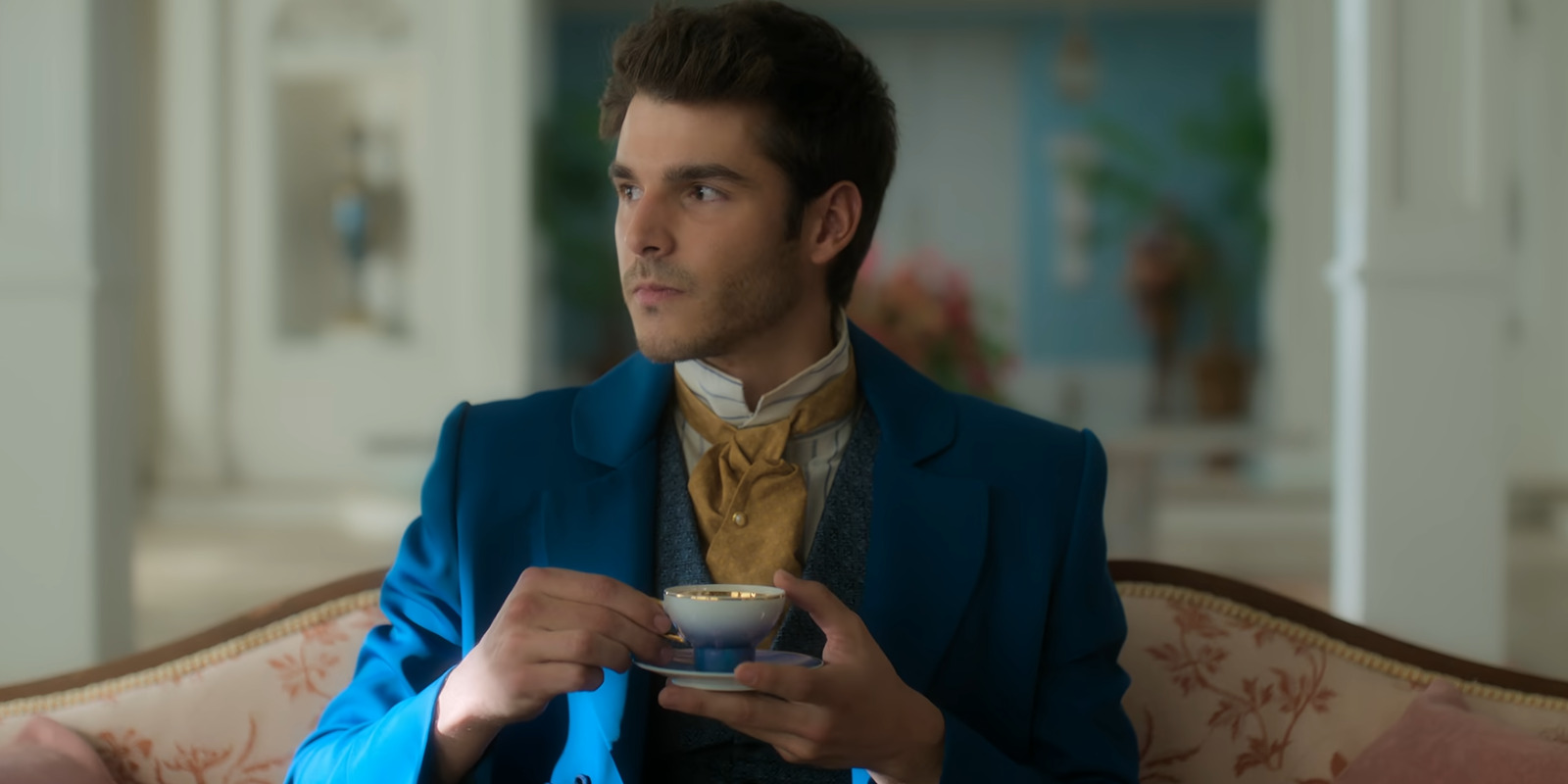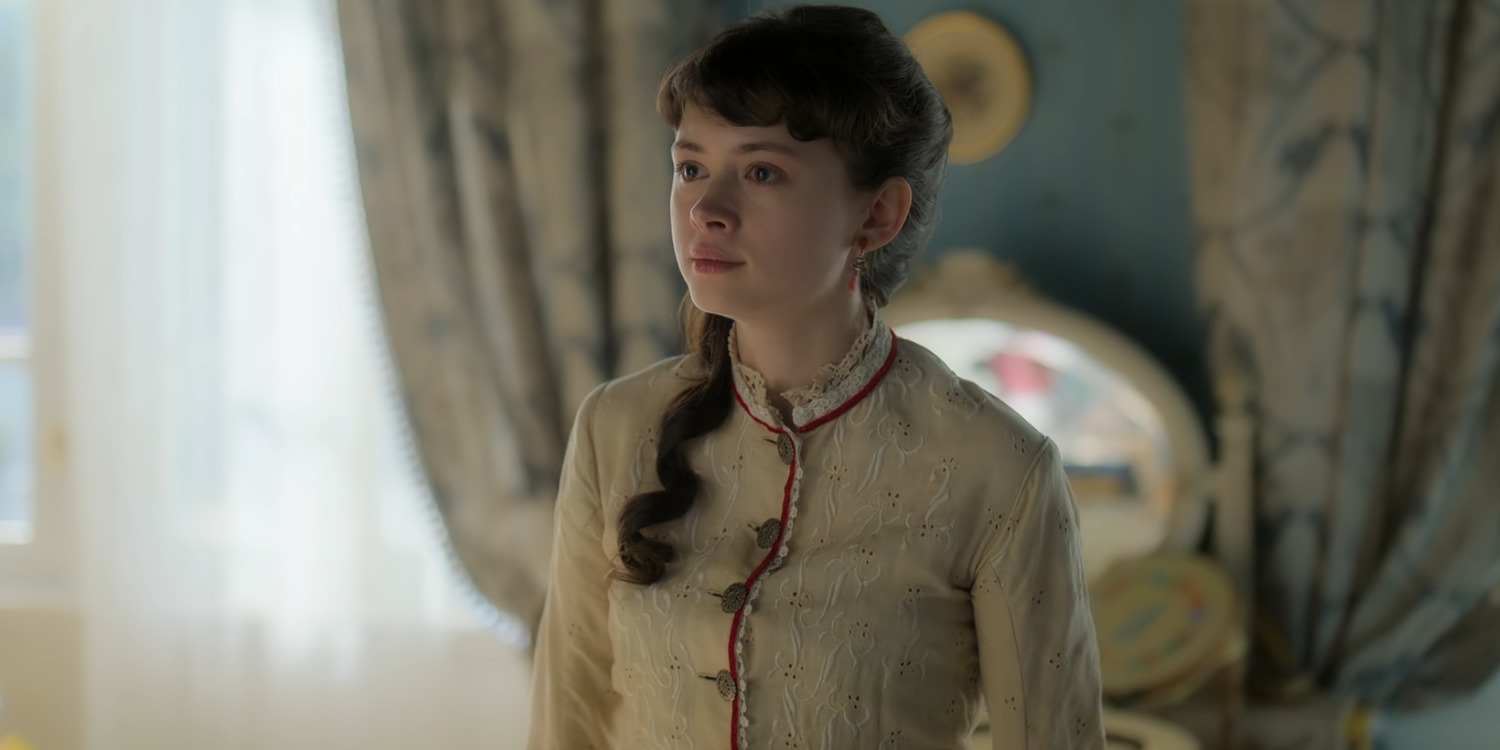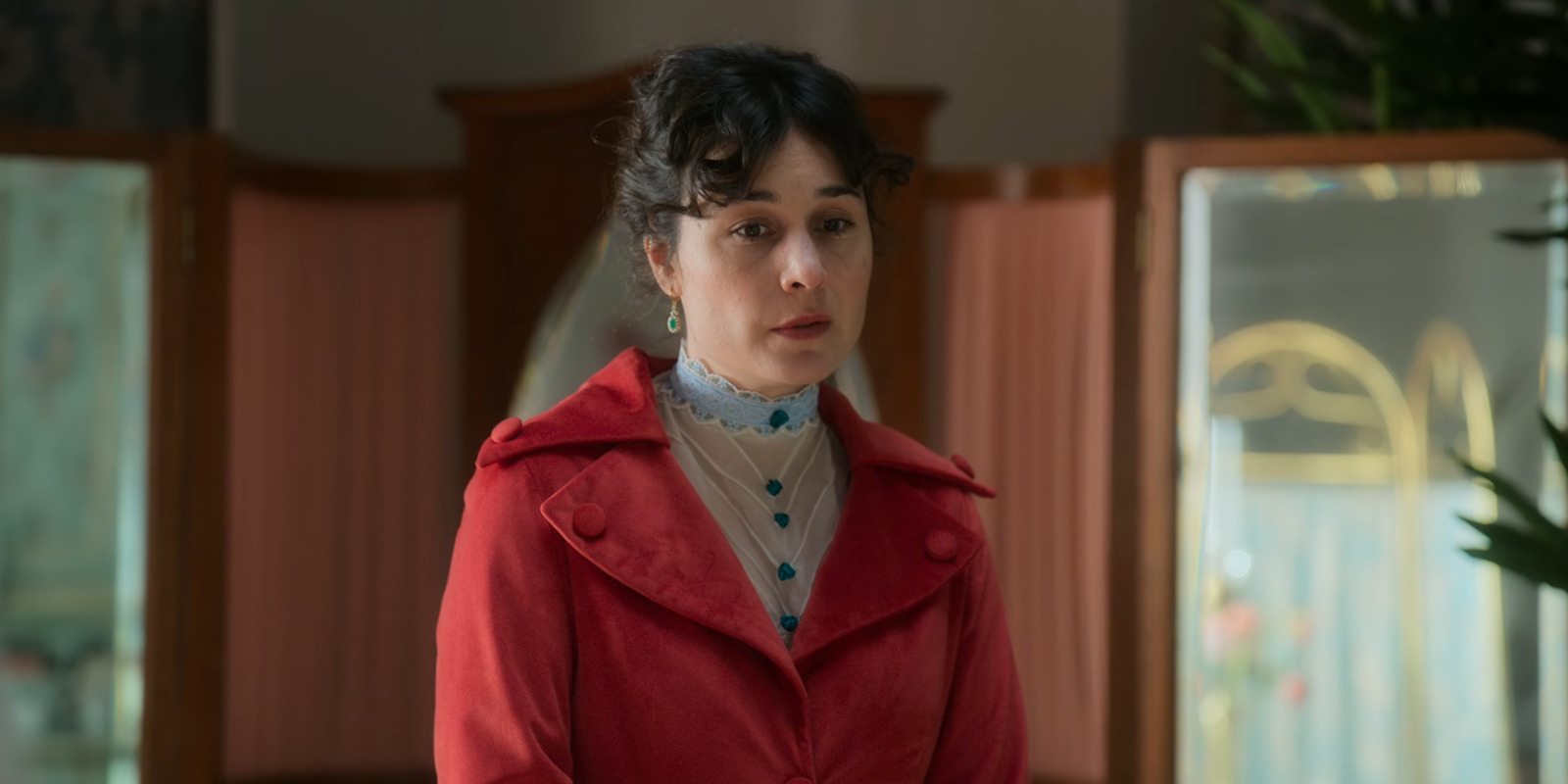‘The Lady’s Companion’ is a Spanish historical romance show that equips a comedic tone in its exploration of Madrid’s social and cultural landscape in the late 19th century. Originally titled ‘Manual Para Señoritas,’ it centers around Elena Bianda, a woman who works as a chaperon for young women in high societies. When she manages to land a coveted job at Don Pedro Mencia’s household, overlooking his three daughters, Cristina, Sara, and Carlota, she’s anticipating having her hands full. However, she finds herself in for an even crazier ride than anticipated when her quest to find a suitor for Cristina lands her in a damning love triangle, thanks to her employer’s charming godson, Santiago.
As the Netflix show progresses, it transitions into an entertaining ensemble period piece revolving around chaperones, young socialites, and their suitors (and suitresses). Despite its evident historical setting, the show takes a modern approach to storytelling, ripe with snippy narrations and fourth-wall breaks. As such, this unique tale of Elena Bianda and its origins becomes a fascinating point of interest.
The Lady’s Companion Intentionally Skirts Historical Accuracy
‘The Lady’s Companion’ transports the audience to a brightly lit version of the late 19th century, as experienced by a professional chaperone tasked with managing the social lives of three young heiresses. The story’s foundation remains intriguing and offers plenty of opportunities for the deconstruction of the lives of women from the time period. However, despite its historical roots, the show itself sports no direct connections to real-life events or people. In fact, the story consciously maintains some level of distance from the realities of the era through meta-writing, visual aesthetics, and even the soundtrack.

The story’s conception came about when co-creators María José Rustarazo and Gema R. Neira were working on another project that was meant to be a period piece. During the research for that project—that ended up never coming out—the duo came across the historical figure of a Chaperone or lady’s companion. As a result, they came up with the idea of a story that revolves around such a character who otherwise serves as an observer to the drama unraveling in-universe. From there, Rustarazo and Neira undertook the venture to create a compelling period piece but with a modern twist.
The story is firmly set in the 1880s, and the characters are bound by the rules and societal expectations of the time. Still, the overarching narrative—from the protagonist’s inner monologue to the casual speech patterns of the characters—retains a contemporary connection. Thus, the departure from historical accuracy, even in terms of costuming, becomes an intentional choice that informs the overall eccentric aesthetic unique to the show. In recent years, this style of storytelling has been particularly popular with period pieces, such as the Apple TV+ drama ‘Dickinson,’ the anti-historical ‘The Great,’ and the showstopping ‘Bridgerton.’ Thus, the departure from reality in ‘The Lady’s Companion’ ultimately defines the story’s identity, becoming a tool of the niche genre.
The Lady’s Companion Underlines Feminist Themes Through Historical Realities
Despite ‘The Lady’s Companion’s’ distance from historical accuracy, the show still delves into the realities of a woman’s life in the 1880s. In fact, the protagonist role of Elena Bianda as a chaperon particularly highlights some of the social oppressions that were commonplace at the time. Consequently, her story outlines the lack of small freedoms in women’s lives at the time, such as true financial independence, merit outside of marriage, and even the ability to engage in social situations without a companion.

Furthermore, as the narrative expands, adding more characters to the ensemble, other diverse storylines enter the frame, including a whirlwind queer love story between two women. Therefore, in order to effectively explore the nuances of period-typical misogyny, the show inherently remains at least somewhat faithful to the social and cultural realities of the time. As a result, the show equips the historical genre as a medium to unravel social issues and cultural discriminations that continue to pertain to contemporary reality. This greatly contributes to the story’s overall relatability, allowing a wide range of viewers to find some resonance in the characters and their experiences.
Elena Bianda is a Fictional Character With a Real Profession From History
Much like the storylines in ‘The Lady’s Companion,’ Elena Bianda is also a work of fiction confined to the premise of the show. Her experiences and narratives are a product of the creativity of creators María José Rustarazo and Gema R. Neira, as well as their team of screenwriters. Even so, while no specific person in history was used as a reference for the character, her position in society as a professional chaperone remains rooted in reality. A Lady’s Companion was an actual position that women professionally occupied from the 18th century to at least the mid-1900s.

Lady’s Companions occupied a unique role in society and culture, falling somewhere in the same realm as a governess and a lady-in-waiting. Wealthy families kept them on retainer to keep women and girls company, both in solitary and social events. Their services were compensated with housing and meals with the family, as well as financial payment. Additionally, their responsibilities also often included the duties of a chaperone. Thus, they were also responsible for overseeing their ward’s social interactions and guiding them toward a good marriage. Consequently, Elena’s character remains true to the social position of a lady’s companion/chaperone from the era.
Yet, while this connection to history informs Elena’s role in the show, her character’s sense of realism and relatability stems from the authenticity of her storylines to the human experience at large. Her character maneuvers many complicated relationships throughout the story, from tricky familial relationships to friendships and grand romances. Moreover, her reliance on irony and humor makes her easily accessible to the audience, compelling them to find a reflection of themselves in her experiences. As a result, even though Elena lacks a direct counterpart in reality, her character remains grounded and well-rounded.


